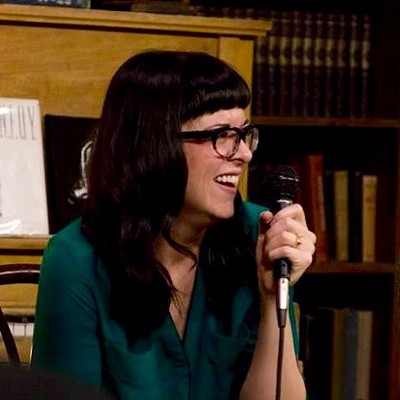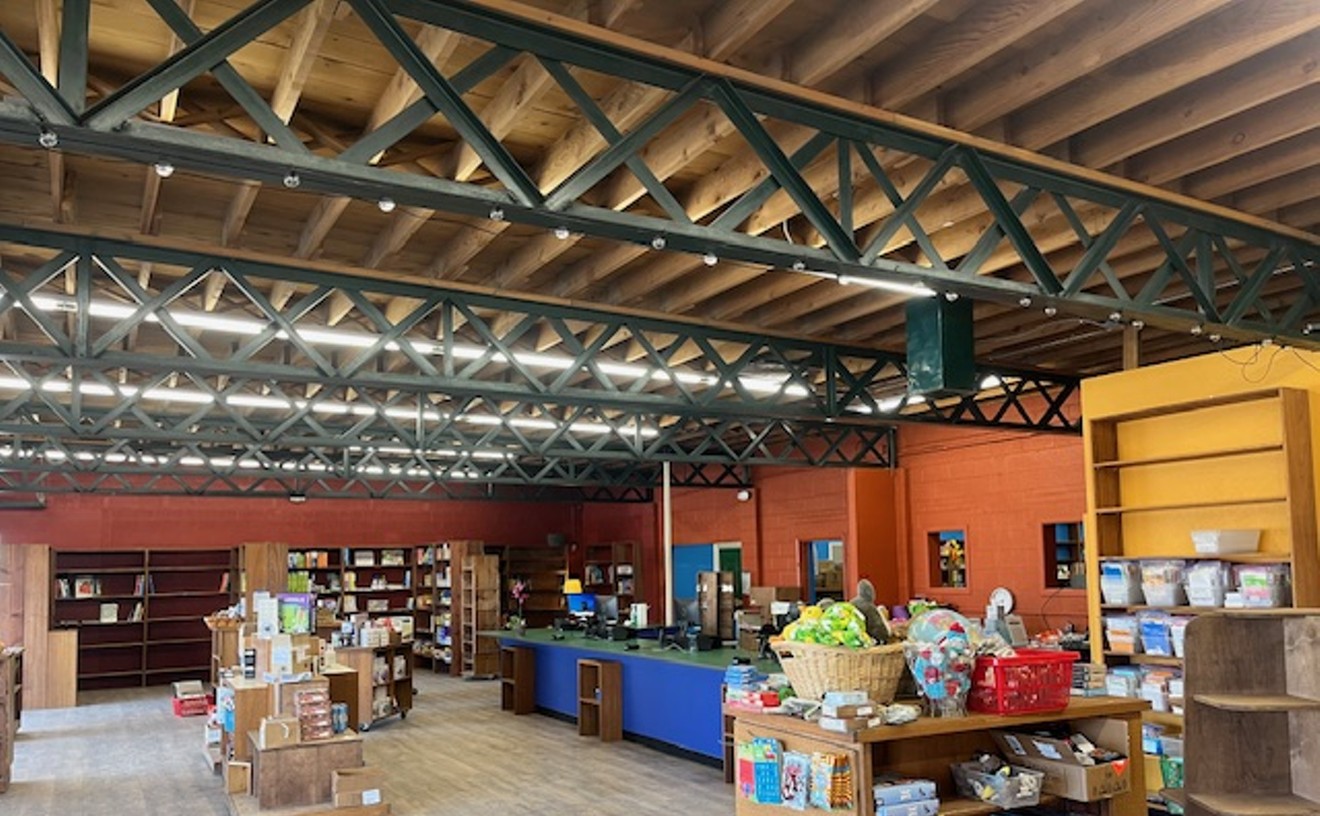The word "weird" doesn't mean much anymore. It's been diluted by overuse and too many applications — a food can taste "weird," a person can act "weird," even a place can make you feel "weird." But when I think about the kind of art I like and the moments in popular culture I've been attracted to over the last few decades, I can't help but describe them as "weird."
Last weekend I made a long overdue trip to the Museum of Contemporary Art for Mark Mothersbaugh's Myopia, which opened last October and closes at the end of this month. (Sometimes when people rave about a thing, it makes me not want to experience it — I don't know if it could be a considered a resistance to hype or just plain stubbornness.) The exhibit was definitely cool and interesting, and I'm glad I was able to see Mothersbaugh's art in relation to his personal history. But somehow, I also didn't think the show was as surprising or "weird" as described to me by friends. Was I missing something? Did I not "get" Mothersbaugh? Actually, I think it was quite the opposite: Myopia was a museum's worth of art I had been surrounded by and sought out on my own for my whole life.
Again, it wasn't that I wasn't wowed: The sheer size of the collection was incredible and the DEVO artifacts — art-school programs, early videos and documentation of the group's subtle infiltration of culture during the '80s, when most people didn't get the full impact of a video and song like "Whip It" going mainstream — were incredible to see in context. But it was kind of like witnessing a larger, more famous collection of work by people I grew up with.
In a recent interview with Westword, MCA Curator Adam Lerner told Michael Paglia: “I had to tell his story because the art world — even art history — doesn’t understand who he is.” I read this and thought, how can the art world not understand who he is? The art of Mothersbaugh has been feeding an entire generation (mine), not to mention Mothersbaugh's own generation, for decades. When I think about art in galleries, his is the kind of pop-art culture, post-war kitsch, funhouse mirror look at consumerism that comes to mind. But I grew up with parents who took me to art openings at Pirate Contemporary Art (where I bought my first piece of work — a Louis Recchia — when I was in elementary school). These same adults let me stay up late and watch David Lynch films with them, but banned shows like Full House (I think my parents found the faux-wholesomeness of the Tanner family unit combined with a laugh-track appalling).
In the last few years I've been lucky to interview many artists of this generation, people who have been making the visual art, films, television shows and music that shape how I see the world. Lynda Barry's illustrations, Wayne White and Gary Panter's work on Pee Wee's Playhouse, Mink Stole's many roles in the John Waters movies I was obsessed with — they collectively form an aesthetic that infiltrated the '80s and '90s in which I grew up. Much of what they do is based in mocking or at least over-exaggerating the sterile, atomic family-based 1950s world that they grew up in: Waters's films are about seemingly perfect suburban living that is eventually tainted by sex, music, dancing and other unclean ideas; Pee Wee's Playhouse began as a theater production that twisted the already strange world of morning television programming marketed to children; Mothersbaugh's work had a similar commentary that stretched across the mediums.
My parents are of this generation, too. I think their rebellion against the perfection of a fake '50s world — a world that in no way mirrored their own experiences growing up — was to expose their kids to the art made by people like them. In a strange way, it made me equally interested in the clean, commercial "Better Living... Through Chemistry" existence they were revolting against. I am attracted to the Disneyland version of the '50s and '60s as much as I enjoy the early B-52s mockery of it; Whatever it is, weird or not, I like it.
I'm tempted to visit the Mothersbaugh exhibit again, if only to pay homage to a generation that made "weird" mainstream — and my life a lot cooler in the process.
Be my voyeur (or better yet, let me stalk you) on Twitter: @cocodavies
[
{
"name": "Air - MediumRectangle - Inline Content - Mobile Display Size",
"component": "12017618",
"insertPoint": "2",
"requiredCountToDisplay": "2"
},{
"name": "Editor Picks",
"component": "17242653",
"insertPoint": "4",
"requiredCountToDisplay": "1"
},{
"name": "Inline Links",
"component": "18838239",
"insertPoint": "8th",
"startingPoint": 8,
"requiredCountToDisplay": "7",
"maxInsertions": 25
},{
"name": "Air - MediumRectangle - Combo - Inline Content",
"component": "17261320",
"insertPoint": "8th",
"startingPoint": 8,
"requiredCountToDisplay": "7",
"maxInsertions": 25
},{
"name": "Inline Links",
"component": "18838239",
"insertPoint": "8th",
"startingPoint": 12,
"requiredCountToDisplay": "11",
"maxInsertions": 25
},{
"name": "Air - Leaderboard Tower - Combo - Inline Content",
"component": "17261321",
"insertPoint": "8th",
"startingPoint": 12,
"requiredCountToDisplay": "11",
"maxInsertions": 25
}
]











